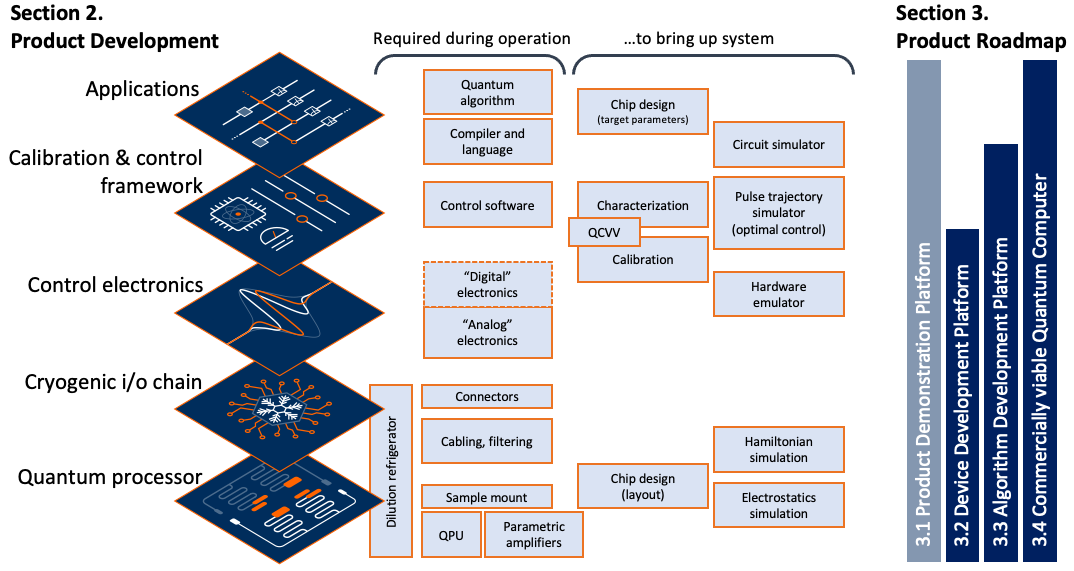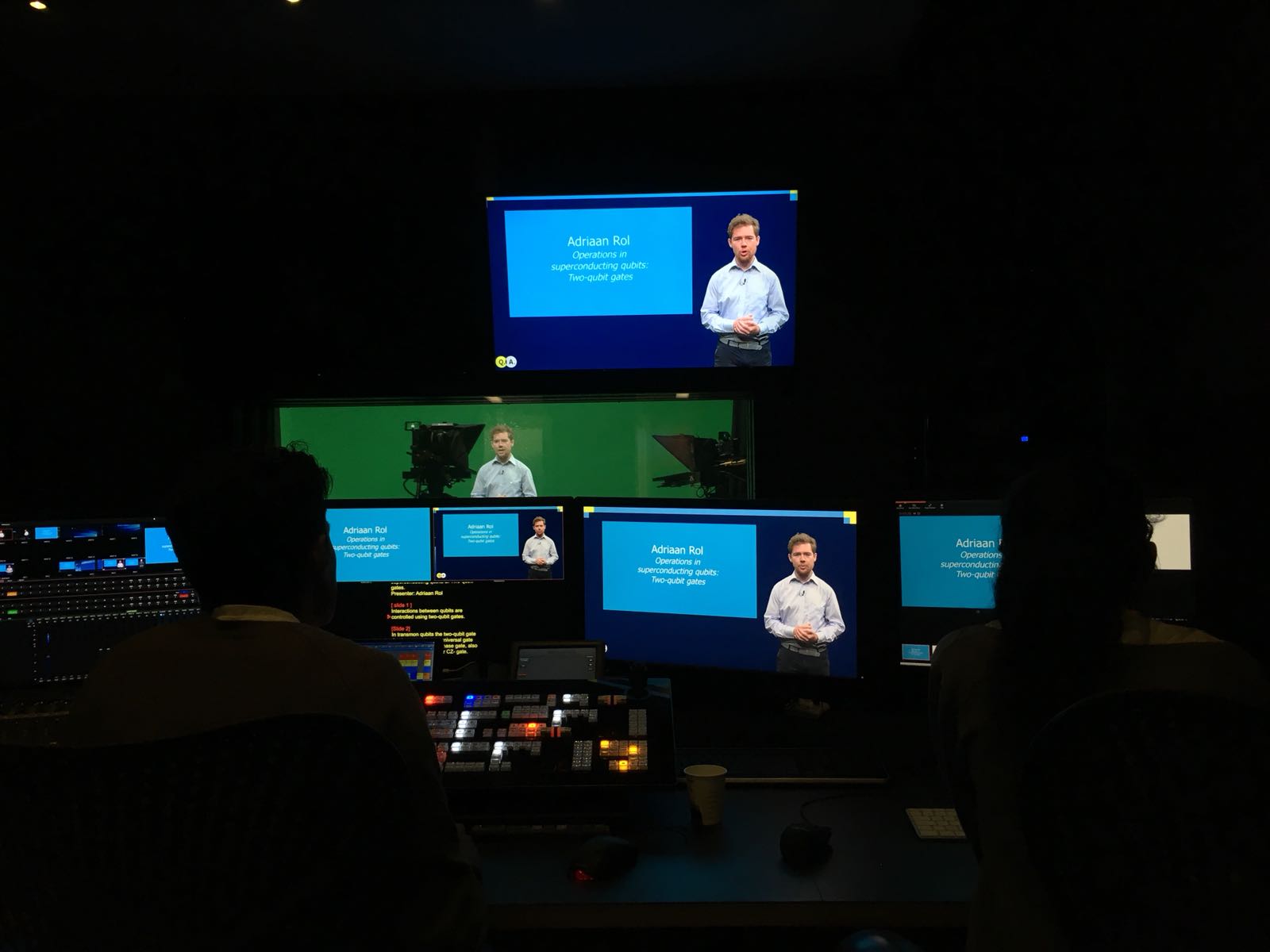Posts tagged Quantum Computing
A Practical Guide for Building Superconducting Quantum Devices
- 19 November 2021
I’m very excited that our tutorial on cQED, the technology behind superconducting qubits, got published in PRX Quantum today! I hope this work will make it easier for anyone looking to get into this fascinating field.
Toekomstmuziek podcast
- 29 July 2021
I was interviewed for the “Toekomstmuziek” podcast on quantum computing by Eveline Meijer of AG connect together with Anne-Marije Zwerver of QuTech. On the question when can we get started with the quantum computer.
Accelerating quantum computer developments
- 21 July 2021
With Orange Quantum Systems, and our partners in the Dutch Quantum ecosystem we have published a paper in the special quantum industry issue of EPJ Quantum Technology on accelerating the development of quantum computers. In this paper, we present the product development approach and roadmap for quantum computers, based on superconducting circuits as an example.

Quantum Delft webinar on Quantify
- 22 April 2021
I gave a presentation at the Quantum Delft webinar on Quantify, and our work on running variational algorithms (VQE) on the Quantum Inspire. Quantify, is an open-source framework for operating quantum computers in the NISQ era developed by Orange Quantum Systems and Qblox
Quantum Inspire Launch
- 01 May 2020
Last week I had the pleasure of being part of the Quantum Inspire launch event. Quantum Inspire is Europe’s first public quantum computer, and the world’s first multi-qubit platform with both a transmon and a silicon-spin backend. You can read my summary of the discussions we had during the event on the Orange Quantum Systems website or watch the recording here.
Cryoscope featured on the cover of Applied Physics Letters
- 03 February 2020
Our paper presenting Cryoscope recently got published and is featured on the cover of Applied Physics Letters. Cryoscope is an in-situ technique which uses a qubit to accurately sample the flux pulses used to dynamically control its frequency. This measurement is key for determining the linear-dynamical distortion on the flux control line and later correcting it, as needed for high-fidelity two-qubit gates.

Quantum Computational Supremacy
- 31 October 2019
Last week Google and collaborators published a paper in which they claim to have achieved Quantum Supremacy , one of the major milestones in quantum computing. The idea of quantum supremacy is to use a programmable quantum device to perform a task that is out-of-reach for any classical computer Google claims to have solved a problem in seconds that would take tens of thousands of years on a state of the art supercomputer. The quantum supremacy experiment has been a long-standing milestone in the field of quantum computation, and as such, skepticism has arised; soon after publication of the article a group in IBM research has challenged the results [1].

Net-Zero two-qubit gate published in Physical Review Letters
- 18 September 2019
We have recently developed a new type of conditional-phase gate for transmon qubits providing several key improvements over standard flux-pulsing-based versions. The Net-Zero gate uses “leakage interference” to minimize leakage to non-computational states. The zero-average, bipolar shape of the pulse makes the gate robust to long timescale distortions in the flux control line and additionally provides an echo effect. We demonstrate a state-of-the-art conditional-phase gate of duration 40 ns achieving 99.1% fidelity and 0.1% leakage.

Building blocks of a Quantum Computer
- 10 August 2018
Last May we recorded the lectures for the QuTech Academy online course Building blocks of a Quantum Computer. Recording the MOOC was quite fun. You can see the result here. In this lecture I explain how two-qubit gates work in transmon qubits.

